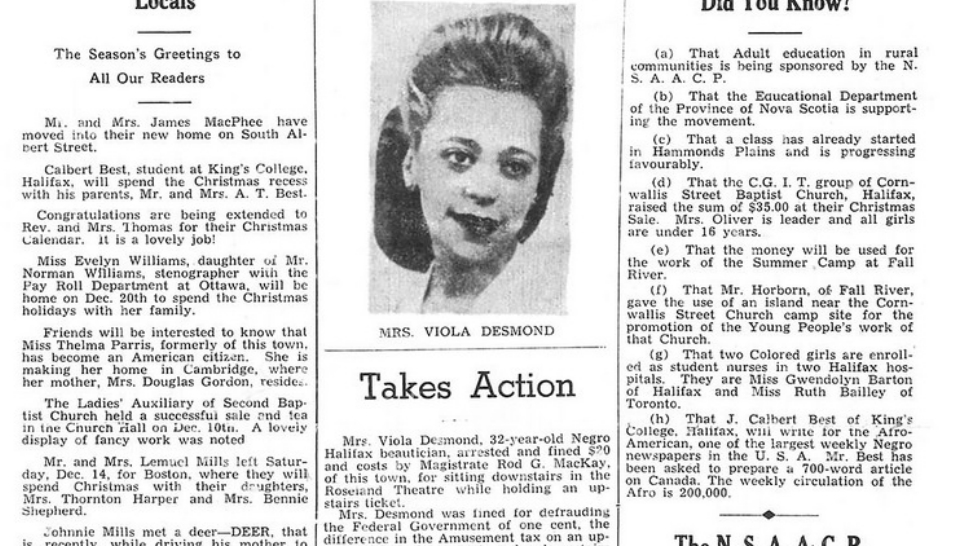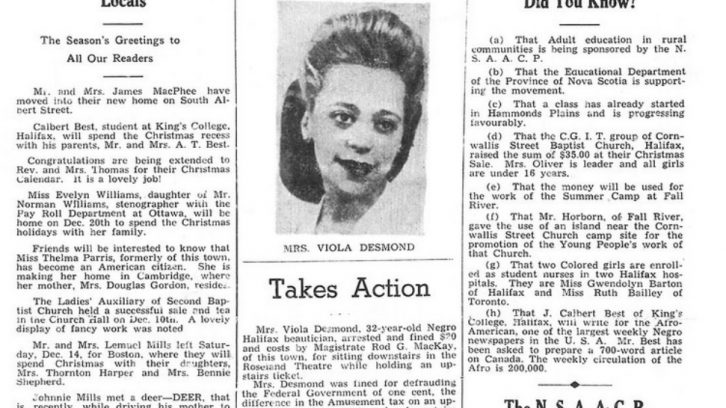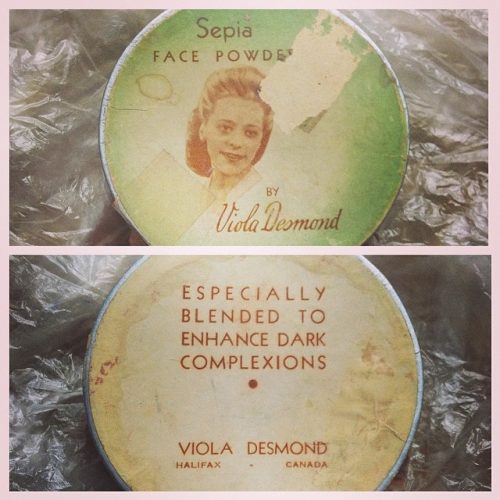History
Viola Desmond’s sister reflects on historic banknote nomination
Civil rights icon one of five candidates selected from list of 461 women nominees

caption
Viola Desmond's story on the cover of the newspaper of the African Nova Scotian community, The Clarion, in 1946.
caption
Viola Desmond on the cover of the African Nova Scotian community’s newspaper, The Clarion, in 1946.Wanda Robson is waiting to see if her sister will be the the newest face on Canada’s currency.
The late Nova Scotian entrepreneur and civil rights icon, Viola Desmond, is one of five women under consideration for the new banknote, set to be released in 2018. The woman who is selected, as well as which denomination she will be on, will be announced Thursday.
“When I read it in the paper and I knew she was one of the nominees, you know what I wanted to do?” Robson says. “I wanted to tell my mother, who’s been passed away since 1964.” Related stories
On International Women’s Day in March, the Bank of Canada announced a open call for nominations for notable Canadian women to be considered for the banknote. The project’s independent advisory council says they received over 26,000 submissions. From there a short list of 12 was determined, which has since been whittled down to five.
Along with Desmond, E. Pauline Johnson, Elizabeth (Elsie) MacGill, Fanny (Bobbie) Rosenfeld and Idola Saint-Jean are under consideration.
“It just seemed almost impossible that it could have happened to her or any member of our family, and to a black woman also,” Robson says of the nomination.

caption
Desmond was an entrepreneur who operated a beauty school and sold cosmetics formulated for African Nova Scotian women.In November 1946, Desmond was travelling from Halifax to Sydney on business. Her car broke down in New Glasgow and while it was being repaired she went to the Roseland Theatre. Unaware of the rule of not selling floor seats to African-Canadians, she was ejected from the theatre and jailed overnight after refusing to leave the whites-only section.
Desmond was charged with evading the additional one cent tax for a ground floor seat. She paid a fine of $20. Desmond’s story helped mobilize African-Nova Scotians against racism and raise awareness about racial segregation in Canada.
In recent years, Desmond’s story has gone from being part of Nova Scotia history to part of the national conversation of Canada’s history. She was honoured with her own Historica Canada Heritage Minute this year.
While Robson would like to see Desmond on the banknote, she says that the pardon Desmond received in 2010 is still the most special honour she’s received. The free pardon was issued to Desmond by former Nova Scotia Lieutenant Governor Mayann Francis and, according to the Nova Scotia government, was the first time a free pardon has been posthumously granted in Canada.
For the past several years Robson has spoken to children about Desmond’s story, as well as prejudice and discrimination. She sees her sister’s inclusion on the banknote short list as a great teaching tool.
“It’s … giving the children a history lesson too about Canada and it’s background — women particularly and what they have achieved,” she says.
No matter who is chosen, they won’t be the first Canadian woman on a banknote. The Famous Five, a group of Alberta women’s rights advocates and Thérèse Casgrain, appeared on the back of the $50 bill from 2004 to 2012. A redesign replaced them with an icebreaker.
